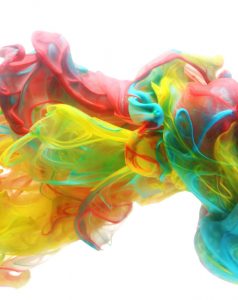 New dyeing techniques can remove the damaging impact the textile industry has on the environment.
New dyeing techniques can remove the damaging impact the textile industry has on the environment.
By Peter Broom
As consumers become more eco-aware they are increasingly calling for apparel which meets environmental and sustainability demands. Indeed research shows that 31 percent of Gen X would buy more sustainable clothing if it was available.
What the textile industry must understand is that it has to accept that change is needed if it is to be in tune with customers who really do care about what happens to our planet.
The recent COP27 gathering was a reminder that there is still much to be done to protect the planet and the textile sector mustn’t shy away from its role in both being the problem and the solution.
This is particularly important as the World Economic Forum says that the fashion industry and its supply chain is, after food and construction, the planet’s third largest polluter.
It’s the industry’s responsibility to see how it can make changes and do things better. It must be more than simple green washing and means developing sustainable materials to offset the textile industry’s detrimental environmental effects.
The industry needs to stand up and act before it is too late. To do this, it needs to go back to basics.
Research from the environmental sustainability consultancy Quantis found that more than 90 percent of the industry’s environmentally damaging emissions come from just four basic activities — dyeing and finishing, fabric preparation, yarn preparation, and fiber production.
Each process needs action to reduce the textile industry’s negative impact on the environment. At Meryl Fabrics, the creation of Meryl EcoDye has made advances in dyeing and finishing.
Meryl EcoDye offers dope dyed fabrics a high-quality coloration and excellent fastness while making the dyeing process more environmentally friendly. With a one-step colorization process, compared with the traditional two step, it removes the need to produce white fabric and subsequent dyeing. Meryl adds a pigment to its yarn so that the color becomes an inherent part of the fabric and guarantees the best colour and highest quality control with outstanding fastness to ultraviolet rays, washing abrasion, migration and ironing.
This has been tested in closed and open laundry circuits where garments can be washed a minimum of 300 times without losing color or misshaping.
Dyeing and finishing is also a major water polluter. The World Bank says that 17 to 20 percent of all water pollution comes from textile dyeing treatments so the advent of waterless dyeing reduces the environmental harm.
Because one metric ton of fabric is estimated to use more than 200,000 litres of water and requires a dye discharge with effluent into water systems, the fact that Meryl EcoDye uses no water offers colossal savings in water resources.
Meryl EcoDye’s environmental advantages are further strengthened as it has no heavy metals or additional chemicals, solvents or silicones to further protect water sources.
By using products like Meryl EcoDye, textile producers can significantly reduce the environmental impact of textile waste and stop the destruction currently being inflicted on the planet, while helping to achieve the United Nations Sustainable Development goals.
It can do this by standing up as an industry to say things can be done better and showing that eco-friendly and effective alternatives are available.
The industry must stop talking about doing something; solutions exist, so it’s time to execute!
Editor’s Note: Peter Broom is Technical and Innovation director at Meryl Fabrics.
February 9, 2023




